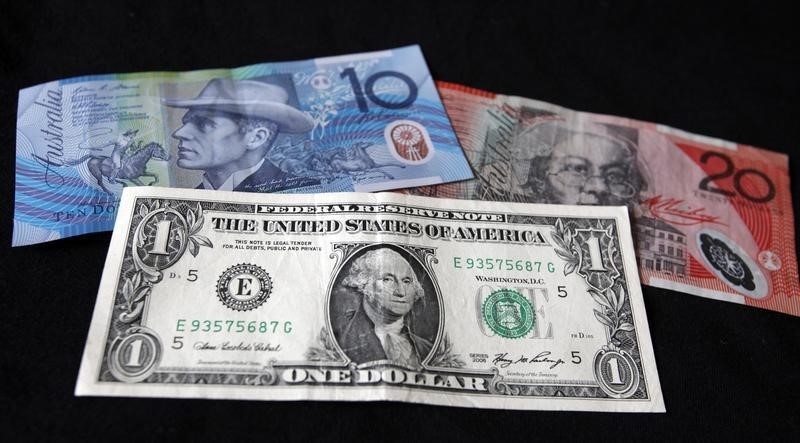Street Calls of the Week
By Cecile Lefort and Charlotte Greenfield
SYDNEY/WELLINGTON, June 15 (Reuters) - The Australian and New Zealand dollars sagged on Wednesday, weighed by falling commodity prices and the possibility of Britain pulling out of the European Union.
The Australian dollar AUD=D4 fell to $0.7339, from $0.7358 earlier. Support was found at $0.7325, then more solidly around $0.7280-95. It touched a one-month peak of $0.7505 last week.
Undermining the Aussie was commodity weakness with prices of iron ore .IO62-CNI=SI , Australia's top export earner, edging lower for two consecutive sessions.
Also weighing was market jitters about the potential exit of Britain from the European Union with the safe-haven yen the clear outperformer. The Aussie stood at 78.05 yen AUDJPY=R , having struck a four-year low of 77.47 on Tuesday. It has shed 8 yen since late April.
Traders say the Aussie is likely to fall further due to its status of a liquid proxy to hedge against weakness, or wager on strength, in Asia.
"Emerging market weakness is starting to put downward pressure on the Antipodeans and without a sudden shift in Brexit poll sentiment, emerging market assets will likely remain weak," said Stephen Innes, senior currency trader at FX and CFD firm OANDA Australia and Asia Pacific.
The New Zealand dollar NZD=D4 fell overnight edging down to $0.6978 from $0.7062 as jitters over Britain's possible exit from the European Union weighed on the Kiwi.
"Currency performance continues to primarily reflect risk aversion and market fear of 'Brexit'," said BNZ senior market strategist Kymberly Martin in a research note.
Economic data released on Wednesday morning showed New Zealand had posted a current account surplus in the first quarter, in line with expectations. next 24 hours would bring a slew of closely watched data that could impact the Kiwi including the Federal Reserve's decision on whether to cut rates, New Zealand GDP data and an auction determining global dairy prices.
New Zealand government bonds 0#NZTSY= gained, sending yields 3.5 basis points lower at the long end of the curve.
Australian government bond futures recoiled from highs, with the three-year bond contract YTTc1 off 4 ticks at 98.410. The 10-year contract YTCc1 was steady at 97.9350, having come off an alltime peak of 98.0025 struck earlier in the day.
The 20-year bond YXXc1 was steady at 97.3550, the highest since the contract started in September of last year.
The premium between 10-year and 3-year bonds AU10YT=RR AU3YT=RR shrank to 48 basis points, the thinnest in a year. A break under 45 basis points would make it the narrowest since 2013. (Editing by Simon Cameron-Moore)
